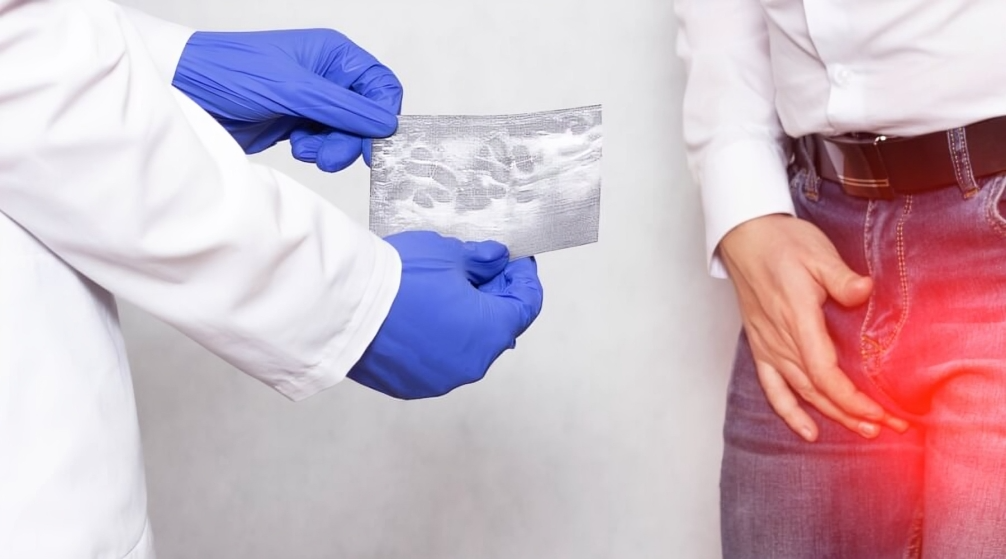
Varicocele: Everything you need to know about diagnosis and treatment
Varicocele is a common medical condition affecting many men. It occurs when the veins carrying blood from the testicles become abnormally dilated, sometimes causing a number of health problems. While it may be painless in some cases, it can significantly impact fertility and cause excruciating pain in others. In this article, we’ll explore everything you need to know about varicocele, including its causes, symptoms, diagnosis, and treatment.
What are varicocele?
Varicocele is a condition in which the veins within the spermatic cord, the structure that carries blood to the testicles, dilate. This dilation can lead to abnormal blood flow, causing congestion and swelling in the veins. Varicocele is similar to the swollen veins in the legs that we know as varicose veins. Varicocele most often affects the left side of the body, but in some cases, it can also affect both sides.
Types of varicocele:
- 1. Simple varicocele: These are cases where the dilation is not significant and does not cause severe pain.
- 2. Complex varicocele: These are cases in which the expansion increases significantly and may be accompanied by chronic pain.
Causes of varicocele:
The exact causes of varicocele are not fully known, but several factors are believed to contribute to this condition:
-
1. Venous valve weakness:
In healthy veins, there are valves that prevent blood from flowing backward. When these valves are weak or malfunctioning, blood flows in the opposite direction, causing the veins to dilate. This is the basic idea behind the development of varicocele.
-
2. Venous system problems:
Some general venous problems, such as high blood pressure in the veins, may cause varicocele to develop.
-
3. Vein growth during puberty:
In adolescents and young men, rapid growth may cause the veins to dilate excessively due to the need for more blood to nourish the testicles during puberty.
-
4. Genetic factors:
Varicocele may be more common in some families, suggesting that genetic factors play a role in its development.

Symptoms of varicocele:
In many cases, varicocele may not show any symptoms at all. However, some symptoms can be noticeable and cause fertility complications or pain. The most common symptoms include:
-
1. Scrotal pain:
The pain can be mild or severe and is often felt on the side where the aneurysm is located. The pain worsens when standing for long periods or in hot weather.
-
2. Feeling of heaviness:
The affected person may feel a feeling of heaviness in the scrotum, especially after long periods of standing or physical activity.
-
3. Increased testicle size:
In some cases, the continued expansion of the veins can cause the scrotum to swell, making the testicle appear larger than normal.
-
4. Changes in the shape of the testicle:
The affected testicle may change in shape, causing discomfort when touched.
-
5. Impact on fertility:
In some cases, varicocele can affect sperm count and quality, leading to fertility problems. It is one of the leading causes of male infertility.
Diagnosis:
Diagnosing varicocele usually begins with a clinical examination by a urologist. During the examination, your doctor may ask you to stand or lie down to determine if there is swelling or changes in the size of your testicle. In some cases, your doctor may recommend additional tests to confirm the diagnosis.
-
1. Ultrasound
Ultrasound is the most accurate method for diagnosing varicocele. Using this technique, the doctor can assess the size of the varicocele and determine whether it is interfering with normal blood flow.
-
2. Semen analysis:
If varicocele is affecting fertility, your doctor may order a semen analysis to assess the number and quality of sperm.
Varicocele treatment:
Many people with varicocele do not require treatment if their symptoms are unnoticeable or if the condition does not affect fertility. However, in cases where varicocele causes persistent pain or fertility problems, treatment may be necessary. Several treatment options are available, including surgical treatment:
Microsurgery:
Microsurgery is the most effective method for treating varicocele. The procedure involves ligating the dilated veins using a microscope to precisely locate the veins without disturbing surrounding tissue. This procedure is typically performed under general or spinal anesthesia in an operating room and typically takes approximately 30–60 minutes.
The benefits of microsurgery include:
Improvement in pain: Microsurgery gives good results in reducing pain associated with varicocele.
Improved fertility: Surgery can improve sperm quality and count, increasing the chances of conception.
Rapid results: Significant improvement in fertility is observed 3-6 months after surgery.
Side effects and risks:
As with any surgical procedure, there may be some side effects, such as swelling or redness in the treated area. However, these effects typically subside within two weeks. The risk is very low when performed by a specialized surgeon.
Post-surgery:
Rest: The patient needs to rest for a few days after surgery.
Avoid heavy physical activities: You should avoid lifting weights or doing any strenuous physical activity for two weeks.
Medical follow-up: The patient is required to visit a doctor two weeks after surgery to examine the wound and assess recovery. A semen analysis is also recommended three to six months after the procedure to ensure improved fertility.
Recovery after surgery:
Most patients can expect to fully recover after microsurgical surgery within two to three weeks. During this time, the patient must adhere to the doctor’s instructions regarding rest and wound care. This type of surgery has a very high success rate and is considered one of the best solutions for problems associated with varicocele.
Frequently Asked Questions:
-
1. Is microsurgery safe?
Yes, microsurgical varicocele surgery is a very safe procedure. Thanks to technological advances in the use of microscopes, the complication rate is very low.
-
2. Will fertility improve after the procedure?
In many cases, surgical treatment significantly improves fertility. Improvements in sperm count and quality are observed after the procedure.
-
3. When will I see the results of the surgery?
Results usually begin to appear 3-6 months after surgery, and a significant improvement in male fertility is evident after this period.
-
4. Can varicocele return after surgery?
In rare cases, varicoceles may recur after surgery. However, microsurgery has a high success rate in permanently eliminating varicoceles.
Recovery tips:
- • Take painkillers regularly to reduce any pain.
- • Avoid strenuous activities in the first period after surgery.
- • Make sure to have follow-up checkups with your doctor to ensure a full recovery.
Finally:
Varicocele is a common condition, but with early diagnosis and effective treatment, positive outcomes can be achieved for overall health and fertility. At Svectoria, we offer the best treatment options using advanced techniques and a dedicated medical team to ensure you receive optimal treatment. If you suffer from varicocele or are experiencing difficulty conceiving, don’t hesitate to contact us for professional medical advice and let us help you regain your health and well-being.
